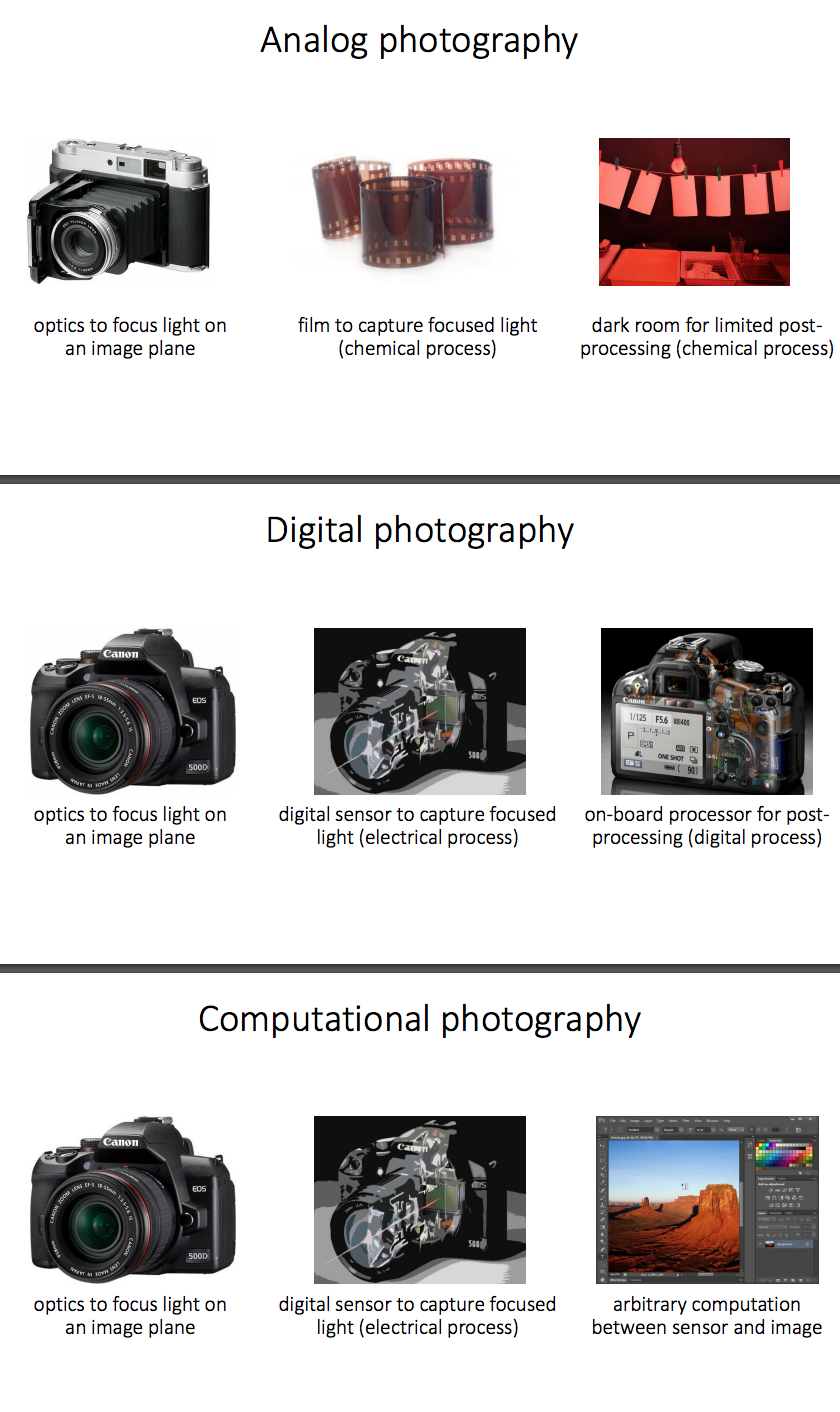I find the term ‘nonhuman photography’ misleading in that it seems to suggest that photography before computation is somehow ‘more human’ and has more human involvement that after. Perhaps it is true that photography has been “reconceptualized in algorithmic and computational terms”, but it has always been a practice that requires a collaborative relationship between human and machine, and the history of photography has always been a narrative of human and machine mutually shaping each other’s identity and potential. I believe that the reconceptualization is happening to the extent that there is a shift in terms of labor: computers are now smarter and can do much more, and the individual human photographer becomes a team of “engineers, photographers, pilots, coders, archaeologists, data scientists” — a “human-nonhuman assemblage,” borrowing Zylinska’s words. I do think that photography based on algorithms, computers, and networks intensifies and expands the condition of inventive-ness and nonhuman-ness that have always been there for the medium, but I don’t think the change is from ‘human’ to ‘non-human.’
This is not really an example of “nonhuman” photography” but I skimmed through some course materials from the Computational Photography course offered at CMU. The slides for the first lecture, for example, give a quite comprehensive overview of the types of technologies that are making photography a more computational, algorithmic practice, sometimes with networking properties.
